This observation by English sculptor Anthony Caro perfectly sets the stage for our discussion of monumental sculptures that have left a lasting impact on history. Caro went on to explain, "It's to do with the size of our space, the fact that they are big sculptures, they are still human scale." His words might well apply to the very works we are about to explore.
However, a word of caution: calling anything 'the best' or 'most famous' is always contentious. Such declarations can stir debates and spark disagreement, with some feeling their favourites are overlooked. That said, this article doesn’t aim to be subjective. Instead, it highlights sculptures that have shaped pivotal moments in art, human history, and the evolution of sculpture itself.
| Statue | Artist | Where to see it |
|---|---|---|
| Venus of Willendorf | Unknown | Natural History Museum, Vienna, Austria |
| Great Sphinx of Giza | Likely by ancient Egyptians | Giza, Egypt |
| Zeus at Olympia | Phidias | The Hermitage, St Petersburg (replica only; original was destroyed) |
| Nike of Samothrace | Unknown | Louvre Museum, Paris, France |
| Terracotta Army | Unknown (Qin Dynasty artisans) | Xi’an, China |
| Moai Statues | Rapa Nui people | Easter Island, Chile |
| David | Michelangelo | Galleria dell'Accademia, Florence, Italy |
| The Pietà of Saint Peter’s | Michelangelo | St. Peter’s Basilica, Vatican City |
| Ecstasy of Saint Teresa | Gian Lorenzo Bernini | Santa Maria della Vittoria, Rome, Italy |
| Trevi Fountain | Nicola Salvi (designer) | Rome, Italy |
| Psyche Revived by Cupid’s Kiss | Antonio Canova | Louvre Museum, Paris, France |
| The Lewis Chessmen | Unknown (Norse origin) | British Museum/ National Museum of Scotland |
| The Thinker | Auguste Rodin | Musée Rodin, Paris, France |
| Statue of Liberty | Frédéric Auguste Bartholdi | New York City, USA |
| Christ the Redeemer | Paul Landowski (sculptor), Heitor da Silva Costa (engineer) | Rio de Janeiro, Brazil |
| Mother Ukraine | Yevgeny Vuchetich | Kiyv, Ukraine |
| Spring Temple Buddha | Unknown | Henan, China |

Venus of Willendorf (c. 25,000 BC)
Discovered in 1908 and measuring just 11 cm, this famous sculpture belongs to the Upper Palaeolithic, and is specifically linked to the Gravettian people.

Estimated to be over 27,000 years old, the carving is made from oolitic limestone and is thought to symbolise nourishment and fertility; these kinds of sculptures were believed to be primarily used for rituals and spiritual purposes associated with those values.
It’s worth noting that far more female-shaped figures than males from that period have been found, suggesting fertility and the power to give life were cardinal in societies where life expectancy was much lower than today.
Although the statue is currently displayed in Vienna, recent studies aim to trace its origins as its oolitic stone doesn’t match nearby Austrian deposits within a 200 km radius, hinting at a French or Italian origin.
The Venus of Willendorf likely travelled across what we now know as Europe over generations, reflecting its creators' nomadic, hunter-gatherer habits. Research into its origins is crucial for understanding connections between Central and Eastern Europe, ancient geography, and other similar figures discovered in Ukraine.
The Great Sphinx of Giza (c. 2500BCE)
The sphinx is a mythical creature, with the body of a lion and the head of a human. Egyptologists believe the sphinx to be a figure for sun worship, among other purposes.
Typically, sphinxes have the wings of an eagle. And the head is usually that of a woman. Neither of these features is on the Great Sphinx of Giza. Its face is thought to represent that of Pharaoh Khafre, who reigned between 2558 and 2532 BC.
The Great Sphinx is not the earliest of ancient sculptures. The carvings and figurines of the Palaeolithic and Upper Palaeolithic, and from Mesopotamia, claim that title. Still, this Ancient Egyptian work is one of the iconic statues of the world. With its Pharaoh's face, it demonstrates the meshing of secular and spiritual power.
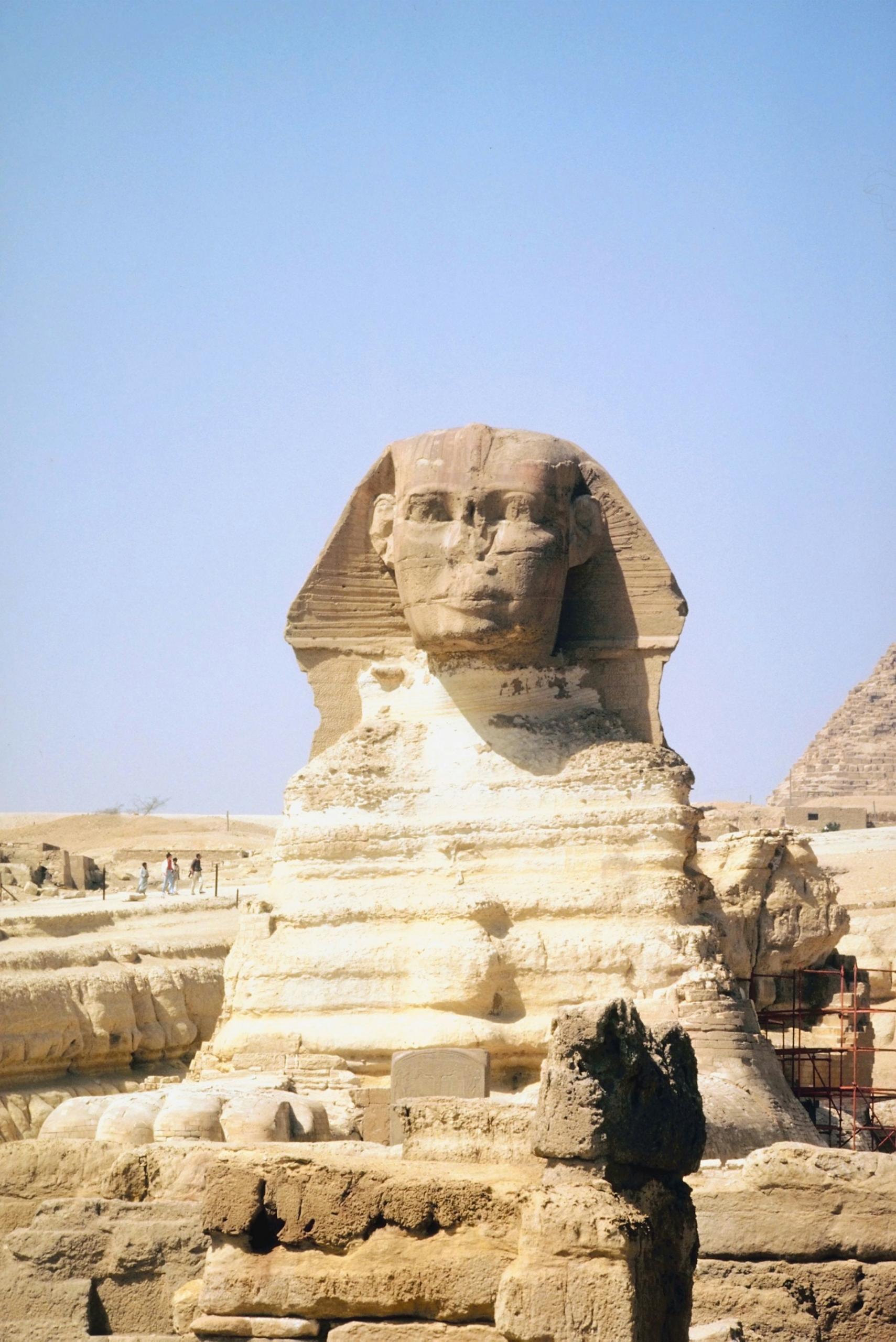
Statue of Zeus at Olympia (c. 435 BCE)
Of all the famous Greek statues, this may be one of the most influential, but it is one we have never seen. One of the Seven Wonders of the Ancient World, Zeus at Olympia was apparently over forty feet tall, and sculpted from gold and ivory.
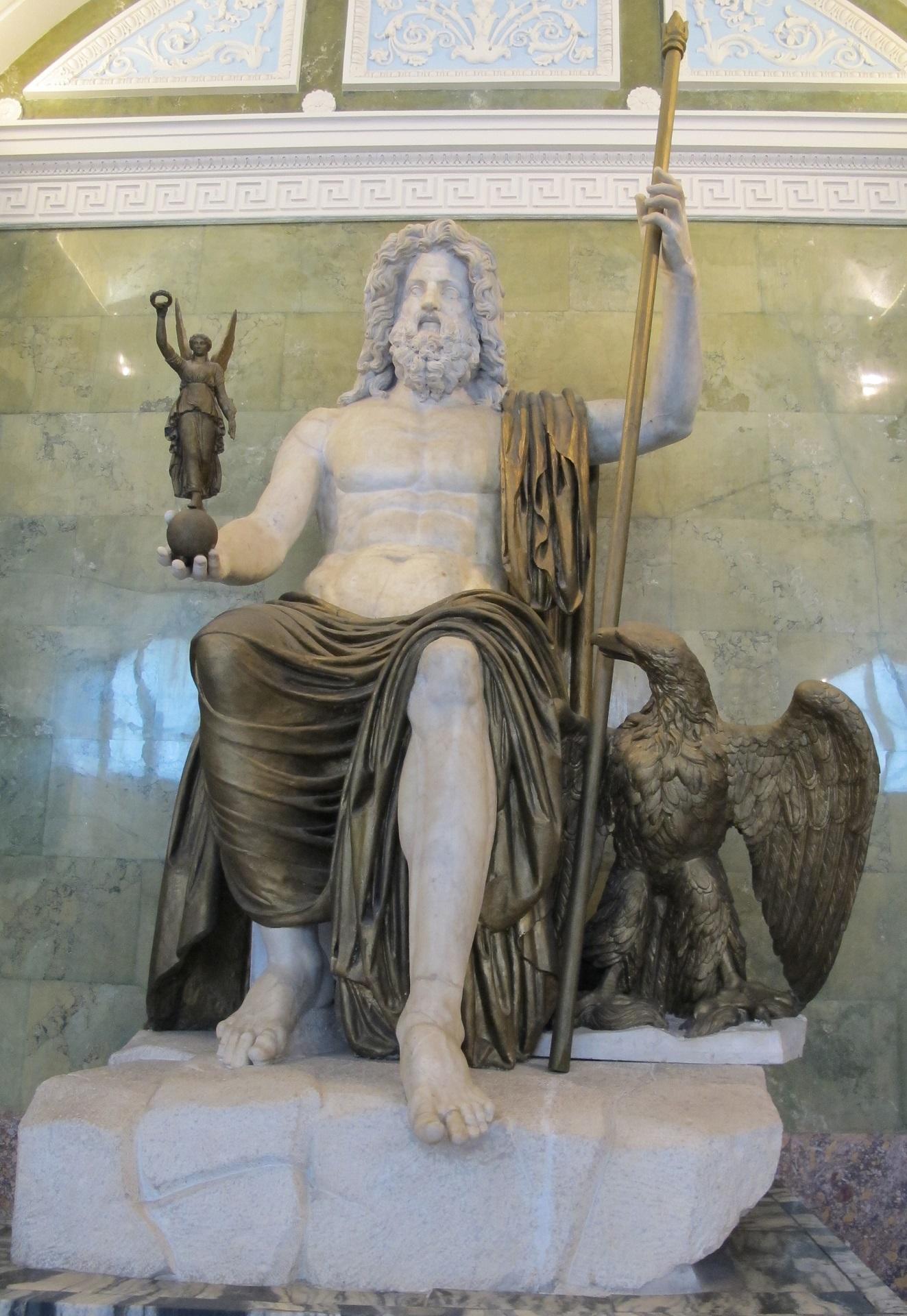
This re-creation of it, housed in the St Petersburg museum, comes close to what the original must have looked like. Its sculptor, Phidias, is one of the most important names in Greek sculpture. He was one of the major influences on Hellenistic sculptural design.
Unfortunately, none of Phidias' work remains, save for his notes, and a few statue fragments. His workshop, rediscovered in the 1950s, tells us everything we know about him and his work. My art classes Brisbane present Phidias' works in our chapter of the Seven Wonders.
Nike, Winged Victory of Samothrace (c. 200BCE)
The Nike of Samothrace constitutes a breathtaking sculpture in the round, capturing the essence of Nike, the Greek goddess of victory. This remarkable marble masterpiece demonstrates how ancient sculptors could breathe life into stone, creating figures that seem poised for movement.
Amongst sculptural forms, those fashioned 'in the round' command their surrounding space with an authority that wouldn't emerge again until the High Renaissance. The sculpture's three-dimensional presence allows viewers to experience its power from every angle, creating an immersive encounter with divine triumph.
Though Nike appears headless today, she remains the archetypal famous historical sculpture, symbolising the supreme achievement of figurative art in the ancient world.
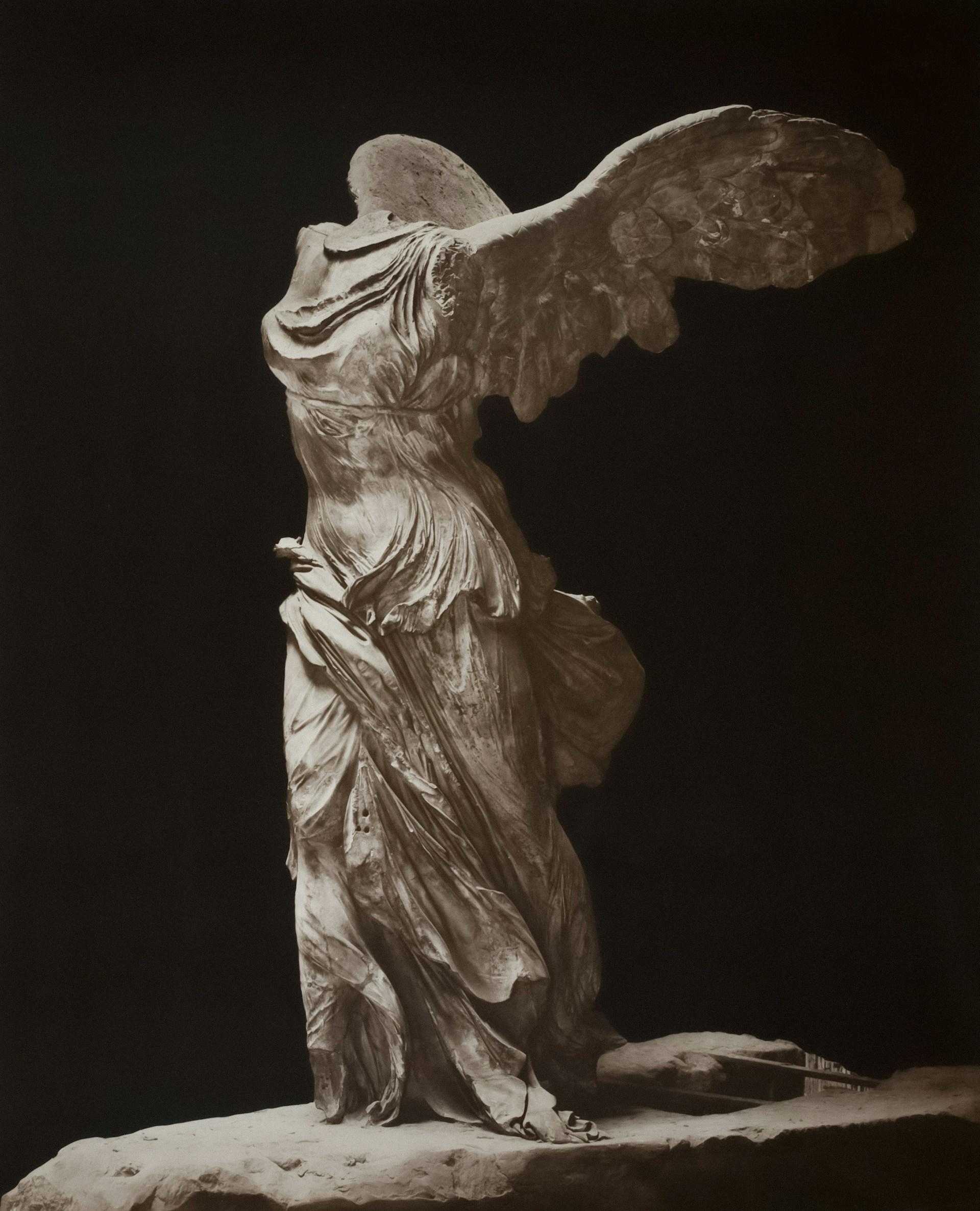
To understand her significance fully, one must appreciate the different styles of sculpture that artists have employed throughout history. Global replicas stand as perpetual testimony to the exceptional artistic brilliance of bygone civilisations, ensuring her legacy endures across continents and centuries.
Terracotta Army (209 BC)
Today, the Terracotta Army in Xi’an, China, is recognised as one of the World's Eight Wonders. It comprises over 8,000 life-sized terracotta soldiers, each with unique facial features and headgear.
These sculptures also include figures of horses and chariots and were directly commissioned by China’s first emperor and founder of the Qin dynasty, Qin Shi Huang (259 BC - 210 BC), for spiritual protection in the afterlife.
Custom dictated that emperors be buried with servants, but Qin Shi Huang opted for terracotta instead—basically creating his mausoleum’s army.
Discovered by farmers in 1974, the site offers invaluable insight into ancient China's military and ritual practices.
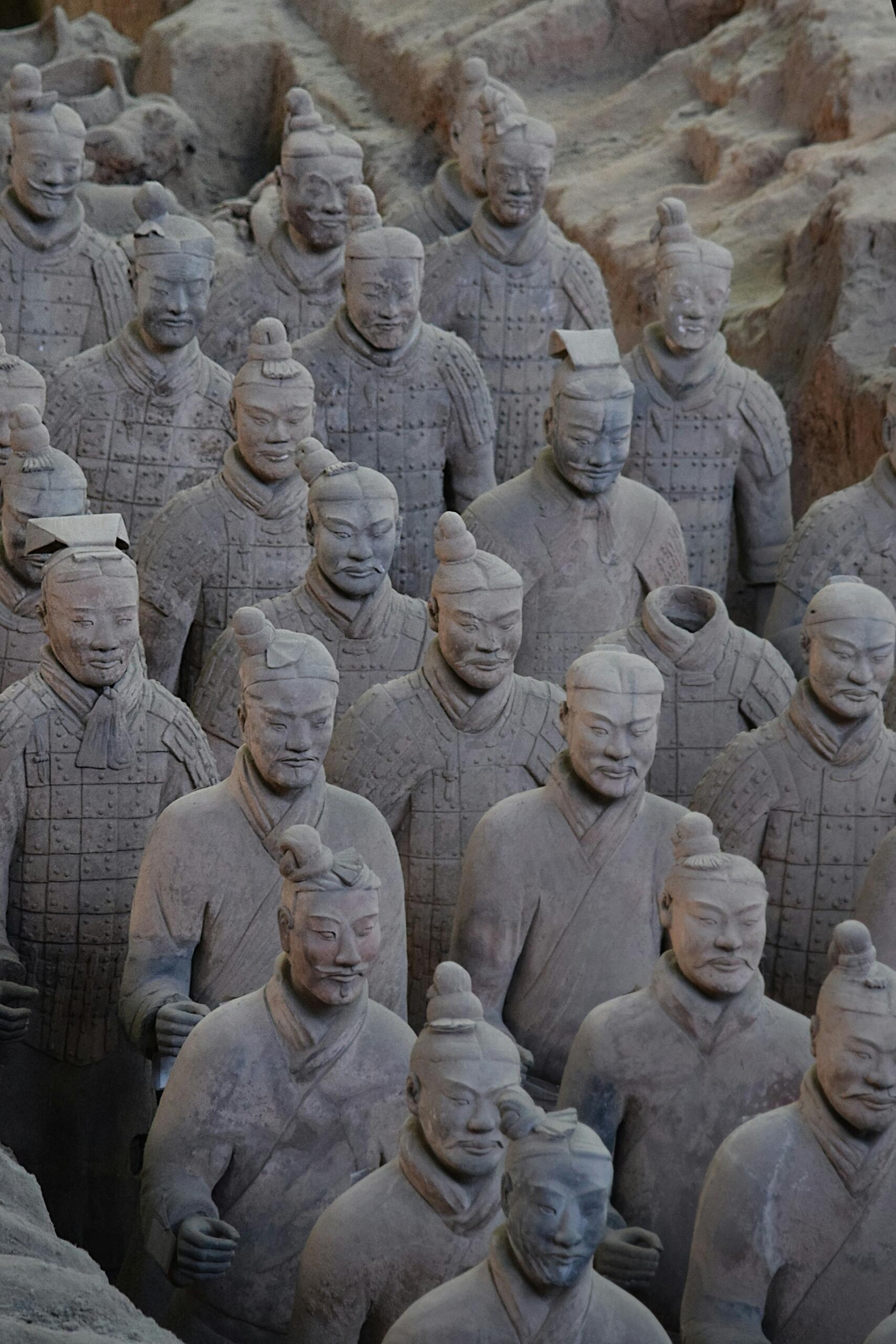
Originally painted in a red palette, the figures have lost most colour over time. Some recognisable pieces include a famous headless soldier damaged during excavation, while others remain completely intact for over 2,000 years.
Lewis Chessmen (c. 1200)
The Lewis Chessmen exemplify the fundamentals of sculpture, rendered in remarkable miniature form. These intricately carved chess pieces—widely regarded as masterpieces—are thought to have originated in Trondheim, Norway, during the 12th century. Their small scale highlights the sculptor’s precision and ability to convey expression and status through form.

Carved from walrus ivory and whales’ teeth, the set features a full medieval chess ensemble: kings, queens, bishops, knights, rooks, and pawns. Each figure is rich, with solemn postures, haunting eyes, and stylised garments.
Discovered in 1831 on the Isle of Lewis in Scotland’s Outer Hebrides, the hoard was likely buried for safekeeping during travel or trade. Their presence in Scotland reflects the movement of people and goods across the Norse world, especially between Scandinavia and the British Isles.
Today, the Lewis Chessmen rank among the most iconic sculptural artefacts from medieval Europe outside the Romanesque tradition. They offer rare insight into Norse artistry, social roles, and cultural exchange—functional objects transformed into enduring works of art.
These pieces got their name from the area where they were discovered. The National Museum of Scotland suggests that the pieces were found in the nearby town of Mealista rather than Uig. However, Mealista is also in the Uig parish, so the alternative name technically still works. In either case, both are located on Lewis.
Moai Statues (c. 1500 AD)
In one of the most remote inhabited places on earth, Easter Island in the South Pacific, there are located 900 colossal stone monoliths carved from volcanic rock by the Rapa Nui people between the 13th and 16th centuries.

Their age, size (3–20 m tall), and weight have long fascinated researchers. Many of these famous statues reveal only their heads today, while their bodies (some bearing petroglyphs) are still buried. The moai sculptures are scattered across the island’s higher ground, indicating ceremonial significance. Archaeologists have linked their placement to island mythology, religious practices, and astronomical rites.
Although Easter Island is part of Chile today, one famous moai statue is located elsewhere; for instance, the British Museum in London houses one that was subtracted from the island in the 19th century, and later donated by Queen Victoria. Much remains to be discovered from these famous sculptures—most recently, a monolith surfaced in 2023, exposed by drought around a volcanic lake.
The Pietà of Saint Peter’s (1499)
Michelangelo’s Pietà stands as one of the most moving and technically masterful sculptures of the Renaissance, carved from a single block of marble with breathtaking detail. Completed in just nine months, it reveals not only his extraordinary talent but also his ability to capture deep human emotion in stone.
Renaissance writer Benedetto Varchi once wrote that it seemed “not made of marble by a mortal hand, but divinely descended from Paradise,” while Giorgio Vasari, overcome with emotion, reportedly wept when he saw it and called it “a miracle.”
The scene of Mary holding the body of Christ is rendered with exceptional grace. Her calm expression and the natural fall of her robes speak volumes, making it one of the most recognisable and admired depictions of maternal sorrow in Western art.
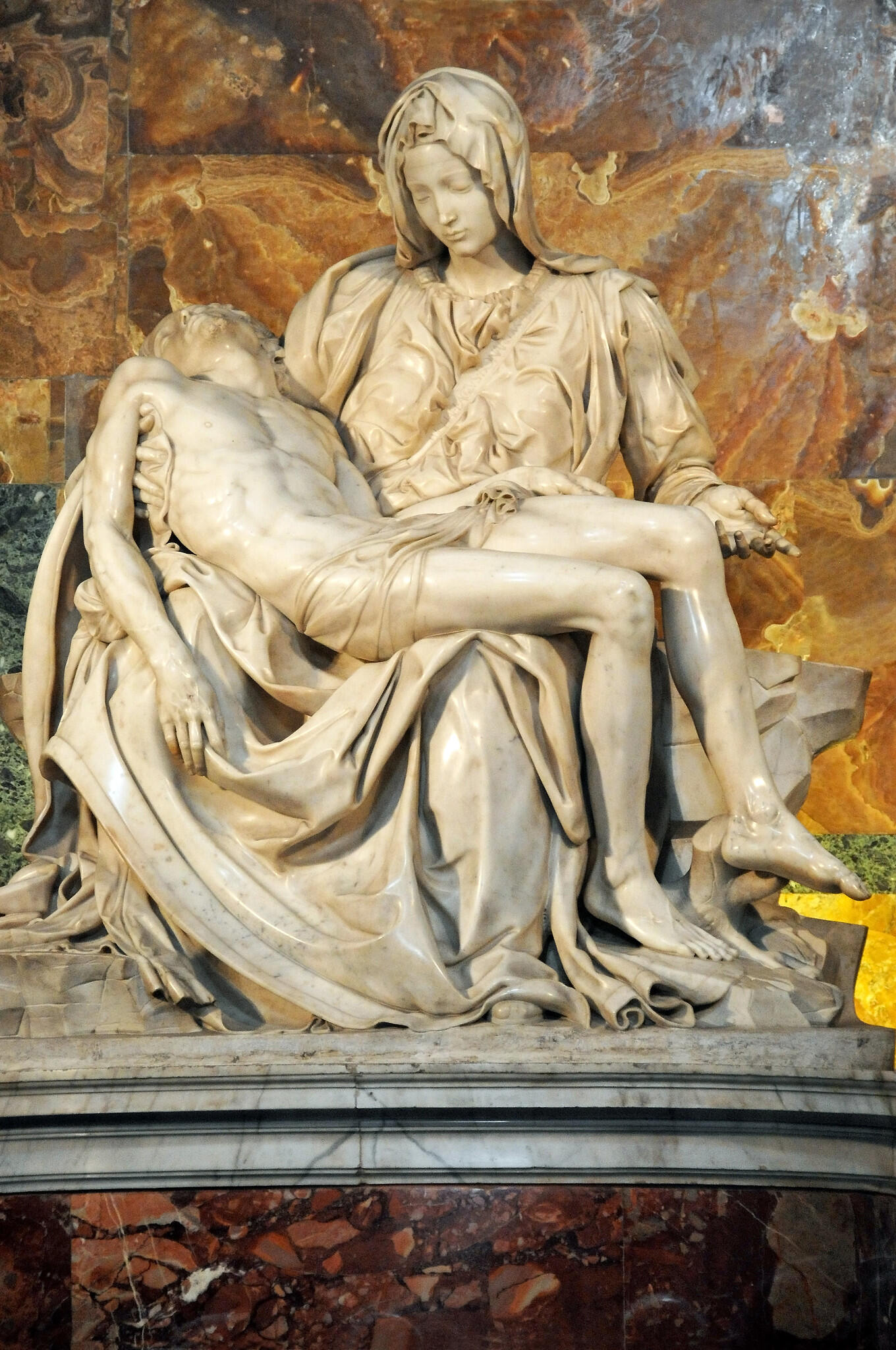
Now housed in the Vatican’s St Peter’s Basilica, the Pietà continues to inspire awe. It is Michelangelo’s only signed sculpture, bearing an inscription across Mary’s chest: “Michel Angelus Bonarotus Florentinus Faciebat.” For generations, this sculpture has stirred reflection, devotion, and admiration across the world.

David (1504)
Among the famous statues, David may be the most renowned representational piece ever. Of all the famous sculpture artists - Donatello, Raphael, and Leonardo da Vinci, Michelangelo drove sculpture to its most natural, proportional, and anatomically correct representation.
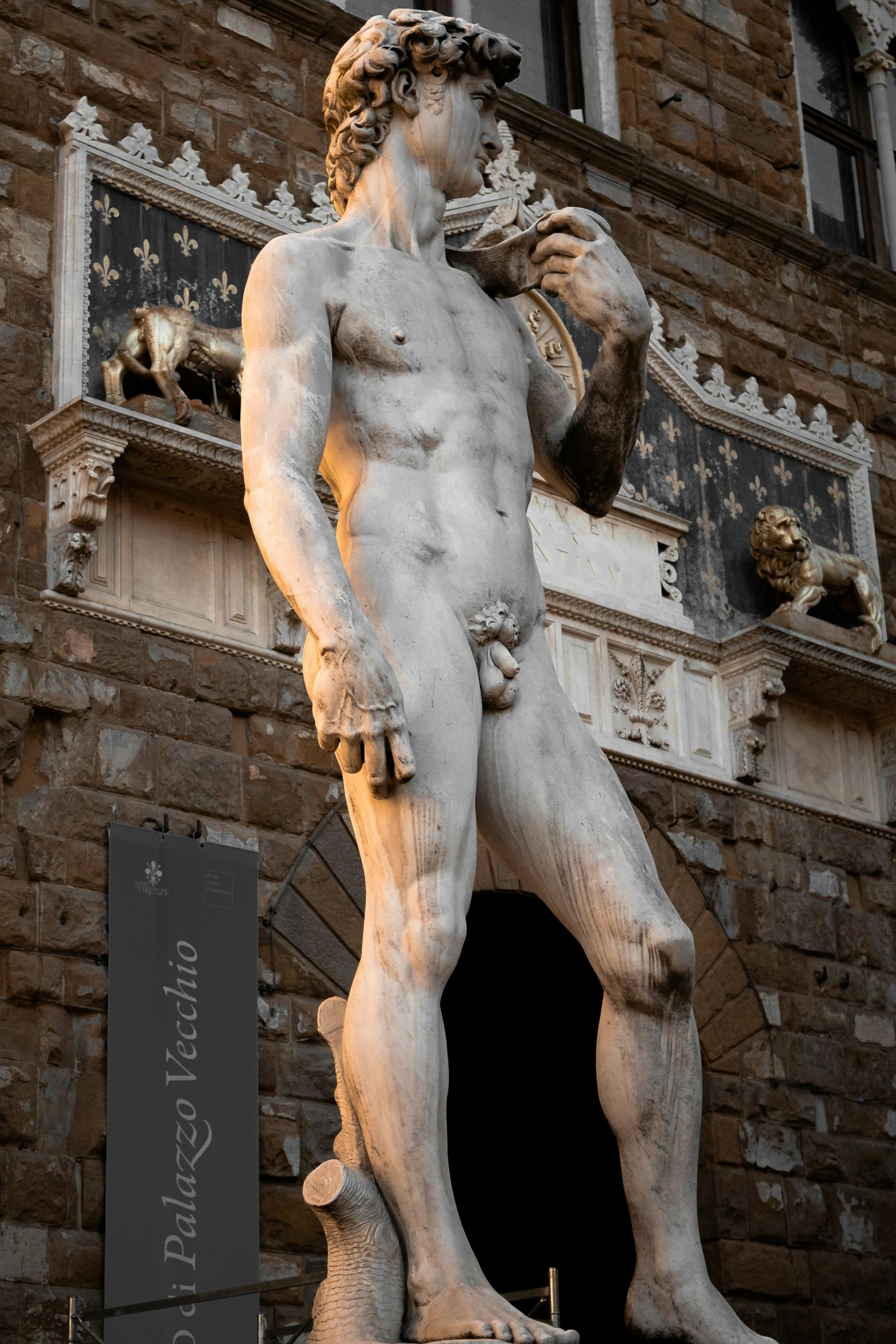
Sculpted from a solid block of white marble, this statue influenced outdoor and religious sculpture alike. A classicist in style, Michelangelo developed ways of sculpting that recalled the most famous Roman statues.
Like the Nike statue, David must be seen in the round. Seen only from the front, the viewer cannot know that David's hand is raised because he is holding a sling across his shoulder. From the back, you can see the sling tracing down to his right hand, which holds the instrument's handle.
Ecstasy of Saint Teresa (1652)
Gian Lorenzo Bernini's The Ecstasy of Santa Teresa epitomises Baroque design. Created between 1647 and 1652, it resides in Rome's Cornaro Chapel, blending movement, emotion, and theatricality to embody Baroque art's dynamic essence.
The sculpture has been a subject of controversy, largely due to the sensual positioning of the saint’s body.
Her pose, with her head thrown back and her limbs in a state of apparent surrender, evokes a powerful reaction from viewers.
Some critics find the physicality too provocative for a religious work, questioning the line between spiritual and corporeal experience. This pose represents religious ecstasy; the euphoria a heightened state of spiritual and internal awareness supposedly induces.

The Dan Brown novel that sent a Harvard professor all over the Western world made this statue famous, and an object of mockery. Admittedly, the work is sensual. However, the late 14th Century usage of 'ecstasy' was 'rapture', conveying a religious tone.
Trevi Fountain (1762)
The Trevi Fountain is more than a famous landmark—it’s a theatrical spectacle of stone and water. Equestrian figures leap from the façade, surrounded by cascading streams and bold, swirling lines. You might even find yourself sketching its dramatic forms during art classes Sydney.
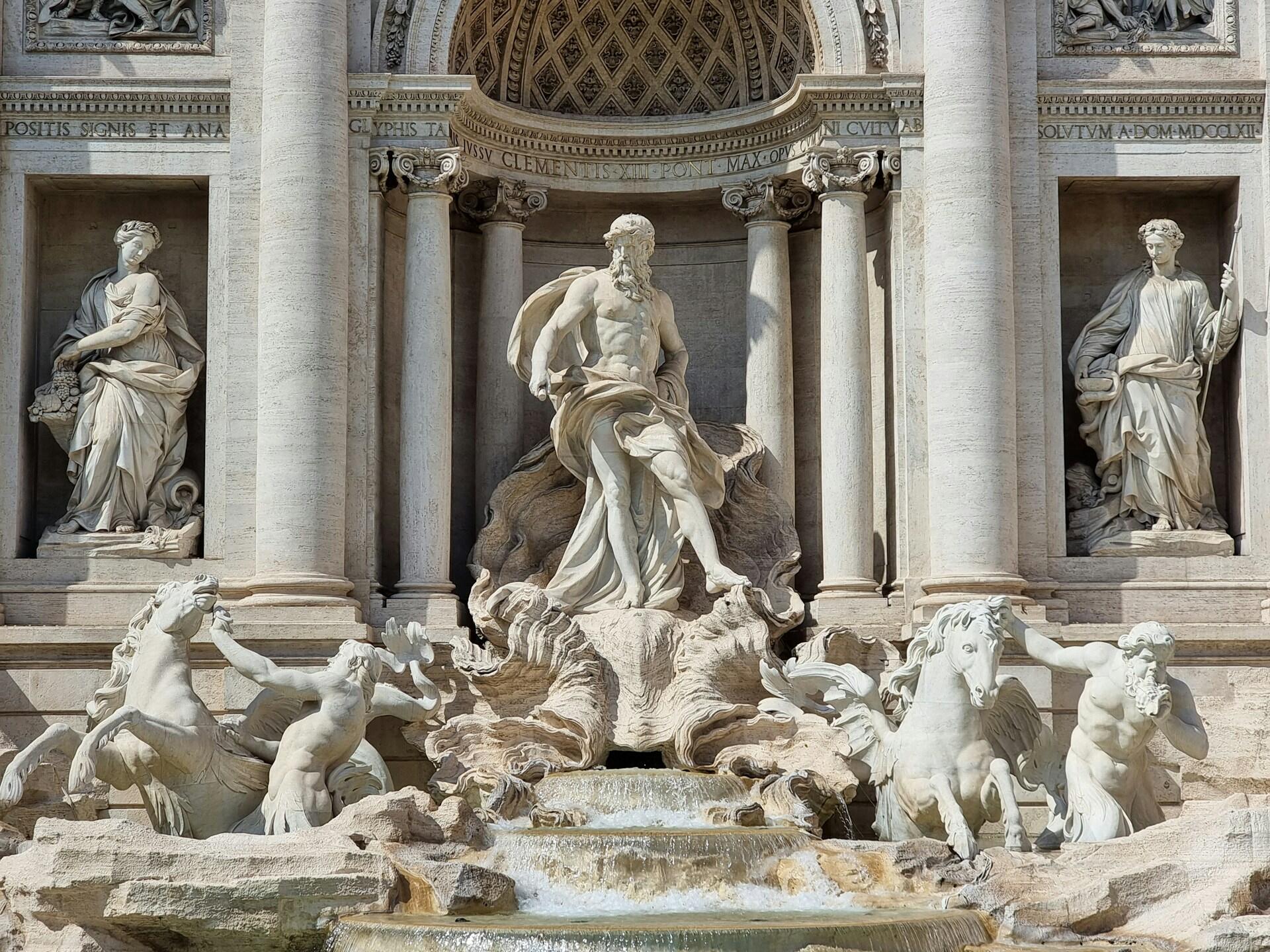
Pope Clement XII launched the project in 1730, aiming to glorify Rome with a monumental public fountain. Though a Florentine sculptor was first chosen, Roman artist Nicola Salvi took over after public outrage tipped the scales.
The fountain wasn’t just about supplying water—it was about making a statement. Influenced by Bernini’s flair for movement and grandeur, Salvi created an installation that radiates prestige and imperial strength. Today, the Trevi Fountain remains an unforgettable example of Baroque brilliance, continues to awe viewers with its scale and splendour.
Psyche Revived by Cupid’s Kiss (1793)
Antonio Canova’s Psyche Revived by Cupid’s Kiss captures a tender, timeless moment between two Greek gods in graceful, passionate movement. This masterful sculpture is a defining example of both the Neoclassical style and the emerging Romantic spirit of its era, blending idealised form with emotional intensity.
Renowned for its harmonious composition, the statue offers no single best viewpoint—each angle reveals new detail and feeling. In fact, a discreet handle near Psyche’s foot was designed to allow the piece to be manually rotated, inviting viewers to appreciate its beauty from every perspective.
This clever detail underscores Canova’s intent: to draw the viewer into the emotional world of his subjects. The gentle curve of Cupid’s wings, the delicacy of Psyche’s pose, and the upward sweep of the composition all contribute to its enduring appeal.
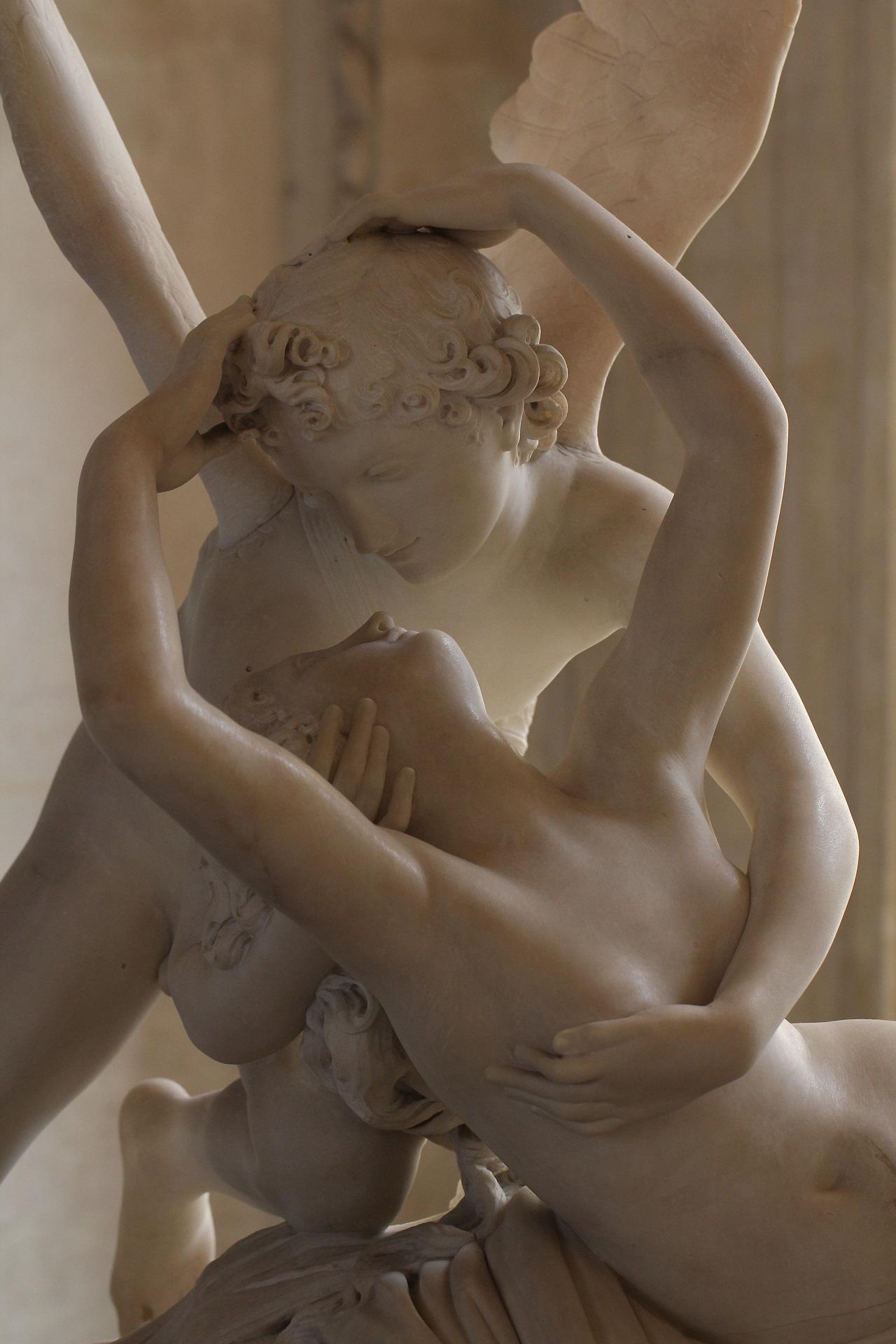
One particular critic complained that this piece delivered so much, it was impossible to take in the whole work from one perspective.
Today, this iconic work resides in the Louvre Museum in Paris, where it holds a prominent place among the world’s most celebrated collections of classical sculpture.
Statue of Liberty (1886)
The Statue of Liberty is among the most iconic and politically explicit historical sculptures. This colossal statue was a gift from the French, but it didn't include the pedestal. Sourcing a suitable plinth caused substantial problems, as the United States were in dire financial straits at that time.

Their Civil War had just ended, and the people of this newly rejoined nation had nothing to spare.
Lady Liberty was not initially about welcoming immigrants, though she became, and remains, a symbol for that.
This statue chronicles the long path from July 4, 1776, when the US gained its independence from England, to the end of its Civil War.
That's when the US's enslaved populations gained their freedom. We find the earlier date on the tablet she bears, and the latter one, 1865, on its delivery receipts.
The statue's full name is Liberty Enlightening the World (La Liberté éclairant le monde, in French). Presumably, the draped female figure represents the Roman goddess of Liberty, Libertas.
Few are aware that her left foot stands on a broken shackle, symbolising the abolition of slavery.
French sculptor Frédéric Auguste Bartholdi designed the statue. Gustave Eiffel, he of the famous Paris Tower, managed the structural engineering. In the US, art classes for kids challenge young drawers to recreate this masterpiece.
The Thinker (1902)
When discussing famous modern sculptures, the name Auguste Rodin invariably crops up. He initiated the Modernist movement and developed a new artistic language.
His lexicon would influence all aspects of abstract and contemporary sculpture. Thanks to Rodin, students taking art classes Perth can study kinetic sculpture, glass sculpture, paper sculpture, and more non-traditional sculpting materials.
The Thinker, depicting a man sitting with his chin on his hand, is his most famous work. It's an unpretentious presentation, one that Everyman can relate to. Art lovers tend to think of Picasso and Brancusi as pioneers of twentieth-century sculpture, but Rodin started it all.
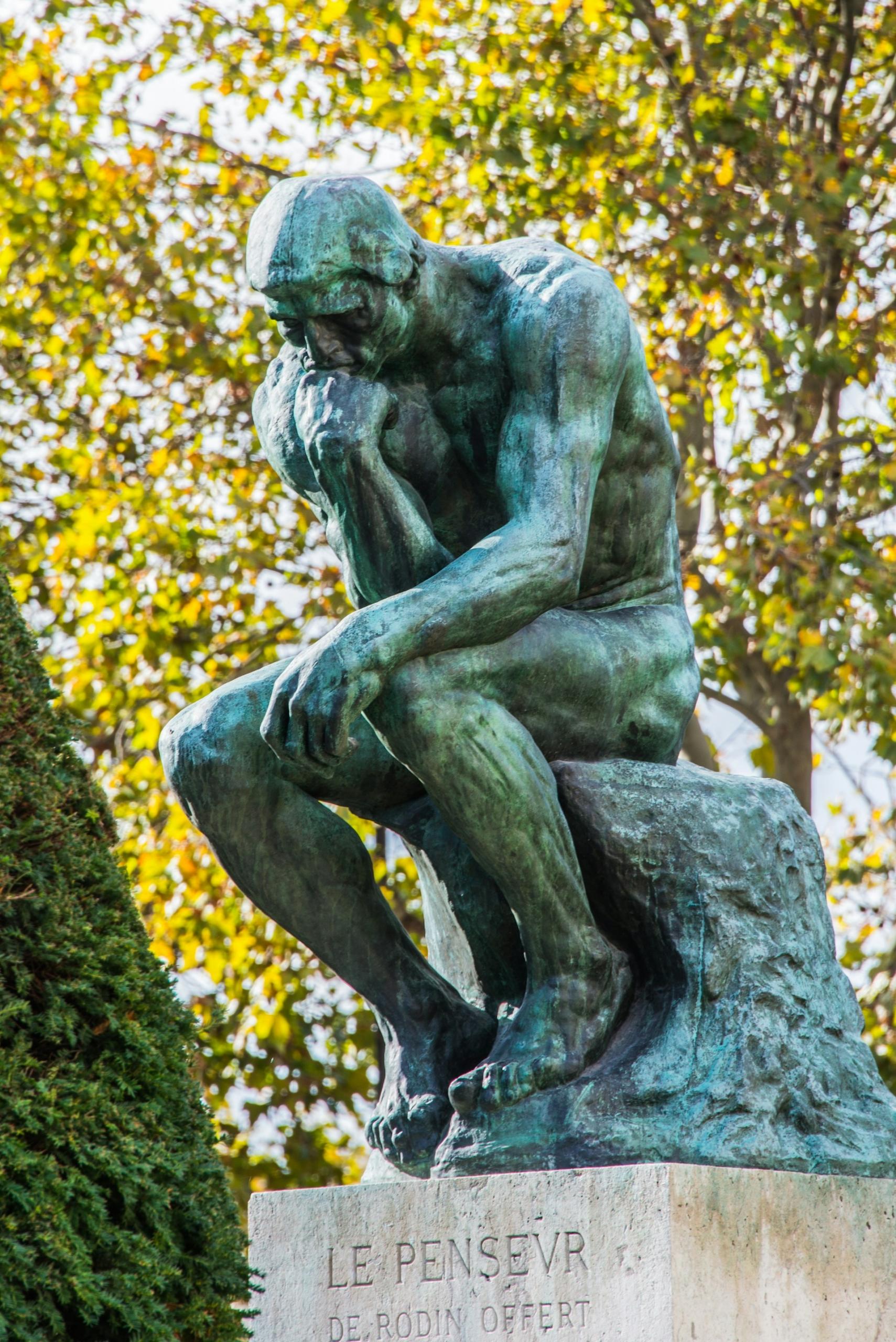
Rodin didn’t experiment with medium and material as much as his successors would. Still, his impressionistic style forever banished art's preference for pompous posing.
Christ the Redeemer (1931)
Many consider Rio de Janeiro’s famous sculpture of Christ one of the wonders of the modern world. Standing high above this Brazilian city, this statue communicates the values and ideals of the country it adorns.

If you see this statue in movies or on TV, you immediately know where it takes place. Regardless of whether you like the art style, you can't deny the cultural impact of the Christ the Redeemer statue.
My mate, who is taking art classes Melbourne, avers that similar statues exist all over the world. From Angola's Cristo Rei in Lubango, to Cristo Rei in Almada (Portugal), more than 40 'Christ's spread their arms in blessing.
This rendition is far simpler than the intended one, which called for Christ to hold a globe in one hand, and a cross in the other.
French sculptor Paul Landowski paired up with engineer Albert Caquot to design this statue. The Romanian sculptor, Gheorghe Leonida, designed the statue's face. Brazilian engineer Heitor da Silva Costa put in the work of building it.
Mother Ukraine (1981)
Formerly known as the Mother Motherland Monument, this famous 101-metre-tall titanium statue stands on a hill at the Museum of the History of Ukraine in the Second World War in Kyiv.
Initially, Soviet plans in the 1950s envisioned two towering statues of Lenin and Stalin. These were abandoned in favour of a commanding female warrior, sword raised, shield in hand, honouring victory in WWII.
In 2023, the statue underwent a symbolic transformation. The Soviet hammer-and-sickle emblem on her shield was replaced with Ukraine’s national trident, the tryzub.
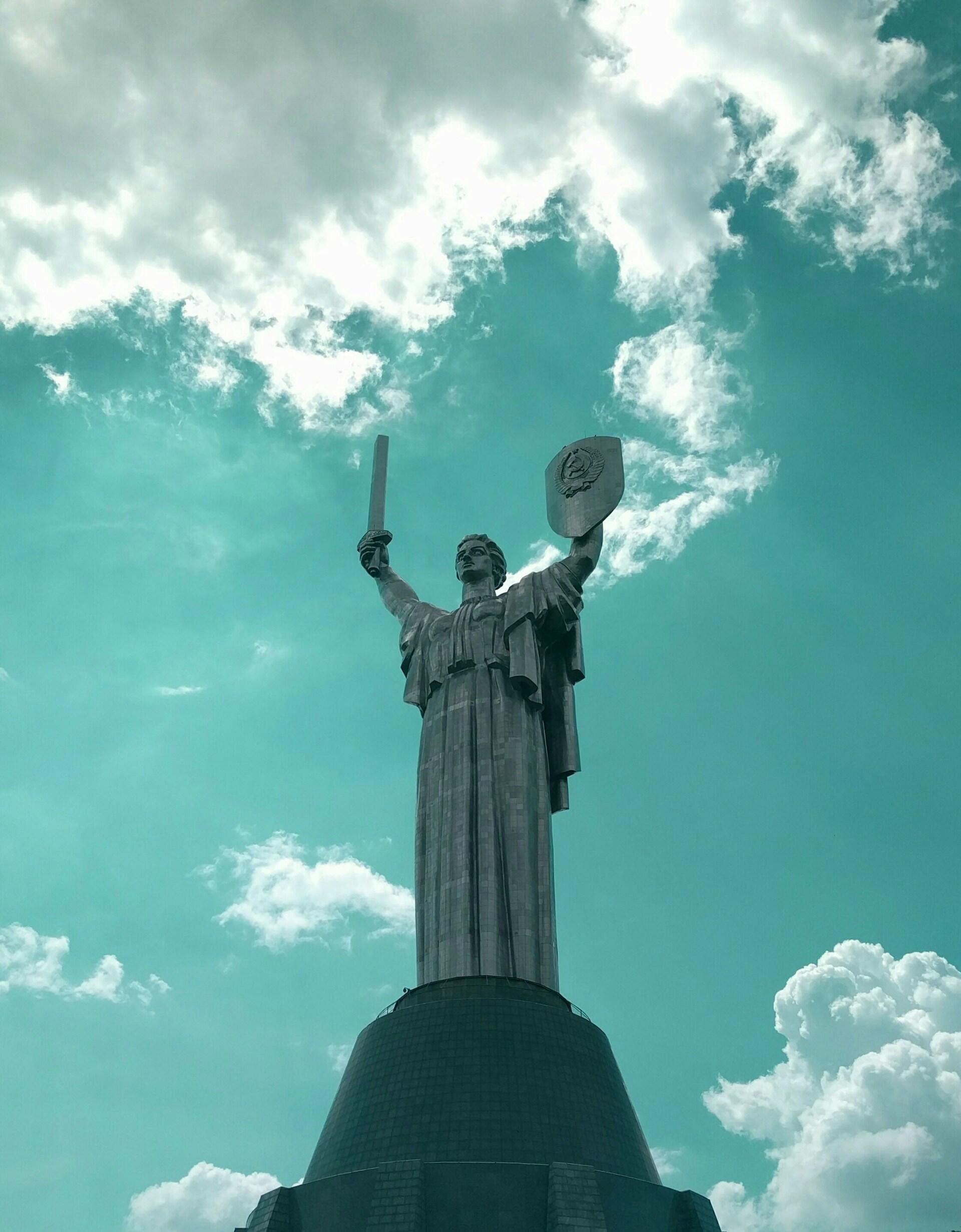
This powerful gesture marked a clear break from Soviet legacy and affirmed Ukraine’s national identity, resilience, and independence amid continuing struggles.
Spring Temple Buddha (2008)
When thinking of monumental statues, we often picture Michelangelo’s David or Rio’s Christ the Redeemer—but the Spring Temple Buddha in China now stands among the tallest and most famous sculptures in the world at 128 m.
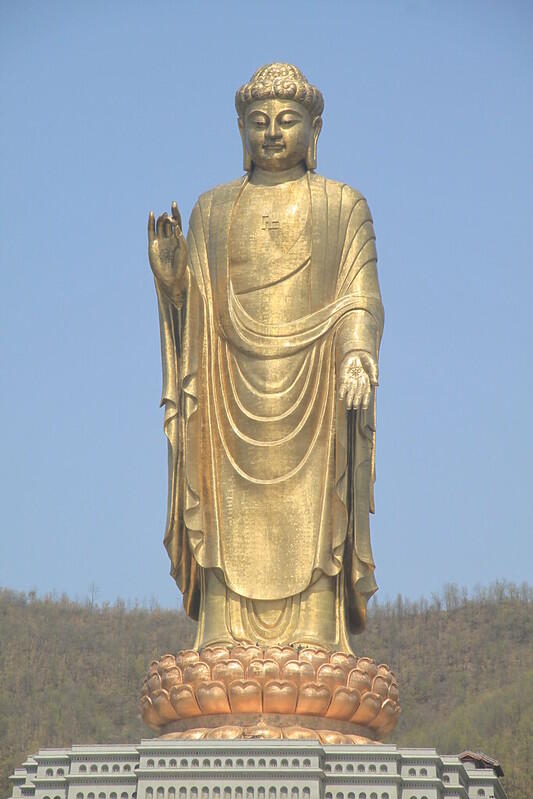
While the other two don't even make it to the top 10 of the biggest sculptures in the world!
Cast in copper, this Buddha sits atop Mount Yao in Henan—the cradle of Chinese civilisation—and is intended to honour China's cultural heritage and contemporary prosperity.
Its construction took over a decade, it includes surrounding gardens, ponds, a Buddhist monastery, and over 6,000 smaller statues, creating a serene pilgrimage site that elevates Buddhism’s core values and spiritual healing.
















